
Central Kentucky Riding for Hope, Inc. (CKRH)
4185 Walt Robertson Rd/ KY Horse Park
LEXINGTON, KY 40511
Mailing Address:
P O Box 13155
LEXINGTON, KY 40583
Phone: 859-231-7066 MAKE AN INQUIRY
View our WEBSITE
View our GUIDESTAR PROFILE
EIN: 31-1024505Founded: 1981
View our PHOTO GALLERY
Profile Last Updated January 24, 2024Public Charity
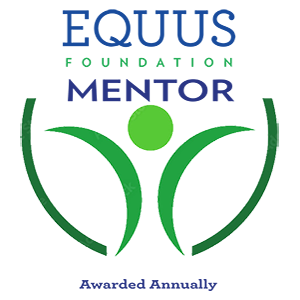
The Mentor Accreditation is awarded annually to an organization that operates at the highest standards for business and equine welfare practices, has been the recipient of an EQUUS Foundation grant for a minimum of two consecutive years, and meets the EQUUS Foundation guidelines for business and equine welfare practices outlined here.
We welcome you to donate directly to Central Kentucky Riding for Hope, Inc. (CKRH); Central Kentucky Riding for Hope, Inc. (CKRH) will receive 100% of your donation made here. However, before making a donation, we encourage you to review this organization's Mentor information.
Last Updated: August 26, 2023
Central Kentucky Riding for Hope, Inc. (CKRH) has not attained the Guardian designation for 2024.
MISSION & PROGRAMS
Mission:Central Kentucky Riding for Hope (CKRH) is dedicated to enriching the community by improving the quality of life and health of individuals with special physical, cognitive, emotional or social needs through therapeutic activities with the horse.
Our organization conducts Equine Assisted Services in accordance with the EQUUS Foundation Guidelines on Qualifications of Organizations Conducting Equine Assisted Services (EAS).
Our organization provides community outreach and/or public education programs involving horses.
Our organization is directly responsible for the care and shelter of equines involved in our programs.
100% of our total programs and services are equine-related.
Our organization does not CURRENTLY use satellite, overflow, foster, and/or outreach facilities.
Equine Assisted Services (EAS):
Our organization provides the following Equine Assisted Services (EAS):
Therapeutic Mounted Services
Therapeutic Unmounted Services
Equine-Assisted Learning involving Academic Learning
4: Total number of Equine Assisted Service Providers at Central Kentucky Riding for Hope, Inc.
1. Amy Riddle, CTRI
FACILITY PARTICIPATION:
Central Kentucky Riding for Hope, Inc.
RELATIONSHIP: Employee
SERVICES PROVIDED:
Therapeutic Mounted Services
Therapeutic Unmounted Services
DEGREES, LICENSES AND/OR CERTIFICATIONS
Amy is a part-time therapeutic riding instructor at CKRH. She holds a PATH Certification.
2. Fayette County Public Schools
FACILITY PARTICIPATION:
Central Kentucky Riding for Hope, Inc.
RELATIONSHIP: Independent Contractor
SERVICES PROVIDED:
Equine-Assisted Learning involving Academic Learning
DEGREES, LICENSES AND/OR CERTIFICATIONS
DEGREES, LICENSES AND/OR CERTIFICATIONS - Students approved by the school system attend The STABLES, an Alternate Education Program defined by Kentucky state regulations 704 KAR 19:002 as an community partnership providing a unique learning opportunity for students in grades 8-12 who thrive in a nontraditional school setting.
3. Melissa Walters, CTRI, COTA/L
FACILITY PARTICIPATION:
Central Kentucky Riding for Hope, Inc.
RELATIONSHIP: Employee
SERVICES PROVIDED:
Therapeutic Mounted Services
Therapeutic Unmounted Services
DEGREES, LICENSES AND/OR CERTIFICATIONS
Melissa is CKRH's Program Manager and a PATH Certified Therapeutic Riding Instructor. Walters is also a Licensed Certified Occupational Therapy Assistant.
4. Phoenix Franzman, CTRI
FACILITY PARTICIPATION:
Central Kentucky Riding for Hope, Inc.
RELATIONSHIP: Employee
SERVICES PROVIDED:
Therapeutic Mounted Services
Therapeutic Unmounted Services
DEGREES, LICENSES AND/OR CERTIFICATIONS
Phoenix is CKRH's Lead Instructor and PATH Certified Therapeutic Riding Instructor.
Overview of our programs involved with providing EAS to individuals with special needs:
Central Kentucky Riding for Hope (CKRH)'s mission is to enrich the community by improving the quality of life and health of individuals with special physical, cognitive or behavioral needs through equine-assisted activities & therapies. A Premier Accredited Center of PATH since 1998, CKRH provides direct services to more than 300 individuals each year with the support of 30 (avg. herd #) equine partners, 125 weekly volunteers, and a dedicated staff of certified instructors, licensed therapists, equine facility managers, and administrative personnel.
All core CKRH programming is developed and facilitated by a PATH Certified Therapeutic Riding Instructor with input from participants, their families, referring medical practitioners, educators, and CKRH’s Program Manager. A customized lesson plan is developed for each participant or community group based on the following needs:
Physical/Cognitive/Developmental Disabilities - for mild to severe medical conditions such as autism, cerebral palsy, Down syndrome, multiple sclerosis, or stroke. Therapeutic Riding & Horsemanship, CKRH’s flagship service, are year-round mounted & unmounted activities designed to improve motor skills, strength, balance, and cognitive processing. Specialty programs include HorseAbililty, a summer camp collaboration with Easter Seals Bluegrass for their youngest clients, and Horse Tales, a memory recall program for seniors with cognitive challenges.
Mental Health - for emotional, social, or behavioral conditions. Mounted & unmounted activities are designed to improve emotional awareness & regulation as well as help reduce stress or anxiety. Specialty programs include Adjust Fire (for active-duty and veteran soldiers with combat injuries or resiliency issues such as PTSD); I RIDE (for adolescent girls living in at-risk households), and EASTT (for adult survivors of sexual trauma), a partnership with Ampersand Sexual Violence Resource Center.
Learning Disabilities – for academic or vocational challenges. Unmounted activities are designed to improve core educational subjects (i.e. reading, spelling, math) and tangential skills such as organizing, sequencing, and memory retention. Specialty programs include STABLES (a year-round curriculum of Fayette County Public Schools for 50+ students in grades 8-12); and Vocational Training (for individuals developing employment skills in horsemanship or facilities/farm maintenance.)
We currently have seven retired registered Thoroughbreds who have been retrained to provide unmounted therapeutic activities. They are mostly used for programming with veterans and at-risk youth. Our staff has made a great effort to select and train horses that fit our high-quality programming and abide by the standards set by the Professional Association of Therapeutic Horsemanship International (PATH).
Community Outreach and/or Public Education:
CKRH collaborates with many organizations across KY to provide diverse programming opportunities for our clients and maximize our impact through the number of individuals we serve. 770+ people were served in 2023.
Schools & Special Education Programs-
The Stables: FCPS school for students grades 8-12 who thrive in a nontraditional setting. In addition to core curriculum such as math, science, and language, students learn about caring for horses & gain valuable vocational skills
Providence Montessori School: Monthly volunteer program
The Learning Center: Educational opportunities
Healthcare Institutions-
Sayre Christian Village: Group program
EasterSeals Bluegrass HorseAbility: Summer camp for young clients 6-21 years of age with disabilities
Liberty Ridge Senior Living: Group program
Ampersand Sexual Violence Resource Center EAST: A 6-week program that supports recovery efforts for women who have experienced sexual trauma
Veterans’ Organizations-
Camp Brown Bear: Program for veterans suffering from PTSD & Traumatic Brain Injury recover in a peaceful, relaxing, & natural setting
Kentucky National Guard: Year-round workshops for Guard members & their staff focused on resiliency efforts for those struggling with substance abuse disorders &/or PTSD
Community Groups/Churches-
Maxwell Street Presbyterian Church: Group volunteer sessions
4-H: Group volunteer sessions
Educational Institutions-
USEF: Educational clinics
UK: Group volunteer sessions and internships
Purdue University: Internships
Research/Medical Use of Equines:
Our organization has never made, and would not ever consider making, equines available for research studies or medical training that involves invasive procedures and/or that which may cause pain or suffering to the equine.
Religious Affiliation:
Our organization does not promote religious education, religious purposes, or a specific religious faith or use donations for religious education or religious purposes; require participants to be of a certain faith; require participation in religious, instruction, activities or services; or require participation in prayer, worship, religious instruction or other religious activities as a condition of receiving social or secular services offered.
Auction Donation:
Our organization has never allowed, or would not consider allowing, an equine to be sold, transferred, released, or otherwise placed into possession of any person or organization that would cause or allow the equine to be sold at auction for slaughter.
POLICIES: ACQUISITION
Our organization acquires horses/equines from the following source(s):
Donation
Lease
Purchase from Owner
Our organization does not acquire horses/equines from the following source(s):
Auction
Kill pen/Feedlot
Return
Surrender
Seizure
Abandonment
Our organization will accept the following:
Geldings
Mares
Not Checked:
Pregnant Mares
Foals
Stallions
Only Stallions to be castrated
Additional information about our acquisition policies and practices:
CKRH herd intake steps:
1) Phone/email inquiry to CKRH's Equine Mgr.
2) Trial Horse Application completed by owner
3) Equine Mgr. reviews & does telephone interview
4) Equine Mgr. site visit to assess condition
5) 90 on-site trial at CKRH in quarantine paddock (30 days) then herd integration trial (60 days)
6) If accepted, a Lend Lease agreement is signed which outlines return-to-owner policies when horse is no longer able to engage in CKRH programs.
POLICIES: INTAKE, ASSESSMENT & TRAININING
Prior to a horse being accepted and/or arriving at the facility, the organization requires the following with respect to the health status of the horse:A current Coggins
Vaccination records that have been administered within the last 12 months
If health records are not available or are out-of-date, the owner is responsible for having vaccinations administered.
If health records are not available or are out-of-date, our veterinarian will administer appropriate vaccinations
A health certificate signed by a veterinarian and dated no more than seven days prior to arrival is provided to our organization either prior to or upon arrival of the equine attesting to the health status of the equine
Prior to a horse being accepted and/or arriving at the facility, the organization has the following policies in place:
The owner of a potential equine is interviewed over the phone or in person prior to seeing the equine
The equine is evaluated at its place of residence
The owner completes an application/contract which constitutes the agreement between the owner and our organization
The owner is financially responsible for the shipping of the equine to and from the organization
Equines are on trial for 60 or more days
During the trial period, the organization accepts financial responsibility for the care of the equine, including board, feed, shoeing and any necessary veterinary care, up to a fixed amount agreed upon by the organization and the owner
The trial period may be terminated by either the organization or the owner for any reason
Equines are not taken on trial
Equines are on trial for up to 30 days
Equines are on trial up to 60 days
The trial period may be reduced based on the equine's progress
During the trial period, the organization accepts total financial responsibility for the care of the equine, including board, feed, shoeing and any necessary veterinary care
During the trial period, the owner/donor is financially responsible for the care of the equine, including board, feed, shoeing and any necessary veterinary care
Following arrival of the equine at the facility, the following is performed:
Physical examination by a veterinarian upon arrival
A Henneke Body Conditioning Score or other body conditioning score is assigned
Physical examination by trained barn staff
Photographs are taken of each equine upon arrival at the facility and kept with the equine's health records
Coggins test
Fecal test
Vaccinations
De-worming
Physical examination by a farrier
Physical examination by a dentist
Blood work other than Coggins
The equine is scanned to check for a microchip
The equine is microchipped if the scan indicates that there is no microchip
Upon intake, the organization has the following quarantine policy in place:
The equine is confined to a designated and separate area for isolation and quarantine at the facility for a prescribed period of time
The equine is confined to a designated and separate area for isolation and quarantine off-site for a prescribed period of time
The equine is not quarantined
The typical length of quarantine is: 20 to 30 days
Horses are assessed for following skills and behaviors:
Retrieval from a pasture/paddock
Leading with a halter and lead rope
Temperament, disposition and attitude, such as rated from very calm to very high spirited
Saddling
Bridling
Lunging
Loading onto and unloading off a trailer
Mounting and dismounting
Riding at the walk
Riding at the trot
Riding at the canter
Riding by a beginner and/or unbalanced rider
Tolerance to unusual objects and loud noises
Known vices, i.e., cribbing, biting, kicking, weaving, stall walking, etc
Grooming
Bathing
Clipping
Tolerance to multiple handlers at the same time
Jumping
Driving (Pulling a carriage)
Our organization has the following policies and procedures in place pertaining to the ongoing assessment of horses in its care:
Physical examination by a veterinarian at least annually
The Henneke Body Condition score or other body conditioning score is updated at least annually
Photographs are taken of each equine annually and kept with the equine's health records
Equines at our facility may be treated by an equine chiropractor
Equines at our facility may be treated by an equine acupuncturist
Equines at our facility may be treated by an equine massage therapist
Equines at our facility may be treated by an equine nutritionist
Photographs are taken of each equine monthly and kept with the equine's health records
Our organization evaluates at least annually and maintains a written record of the weight-carrying and workload limitations for each equine that is ridden
Our organization does not evaluate the weight-carrying and workload limitations for each equine that is ridden
No equines are ridden; not applicable
The following variables are considered in determining the weight-carrying and workload limitations for each equine that is ridden:
Equine age, weight, breed, body condition, fitness, balance, health and soundness
Equine conformation to include the top line, length of back, strength and width of loin, bone density (measured by the circumference of the cannon bone just below the knee)
Size, shape, condition and angle of the hooves
Participant weight, height, body proportions, balance, fitness and riding skills as well as behavioral issues and safety concerns
Weight and proper fit of the saddle and other equipment
Terrain and footing in the working environment
Duration and frequency of working sessions, as the frequency with which an equine is subjected to maximum weight carrying and/or workload
Nature and pace of work, repetitive or varied, radius of turns, degree of incline and regularity of footing when equine is subject to maximum weight-carrying capacity
Temperature and/or weather conditions
Seasonal impact on the equines' workload and weight-carrying capabilities and limitations
Our organization does not evaluate the weight-carrying and workload limitations for each equine that is ridden
No equines are ridden; not applicable
Horses provided formal training (groundwork or riding): 2-3 times per week
POLICIES: BREEDING
The organization has the following policies related to breeding and stallions:Our main facility where our organization conducts its programs does NOT breed equines.
One or more of the facilities where our organization conducts its programs, including foster facilities, breeds equines
One or more of the facilities where our organization conducts its programs, including foster facilities, are permitted to house stallions
POLICIES: EUTHANASIA
The organization has the following policies related to euthanasia:Our organization will never have an equine euthanized for space
Our organization will have an equine euthanized upon the recommendation of the veterinarian if the equine is a threat to itself, other equines, or people
Our organization will have an equine euthanized upon the recommendation of the veterinarian after all reasonable treatment options have been explored
Euthanasia is done on site when possible to decrease trauma from transport
Disposal of the carcass is handled within 24 hours
Our organization will never have an equine euthanized under any circumstances
Euthanasia is done at the veterinarian's facility
The following are authorized to administer the procedure for your organization in accordance with state laws:
Veterinarian
A certified euthanasia technician
Senior staff with appropriate training
Employee of animal control shelter or humane society with appropriate training
Veterinary student under the supervision of a licensed veterinarian
Not applicable. Our organization prohibits euthanasia under any circumstances
Additional information about our euthanasia policies and practices:
CKRH follows euthanasia policies as established by the American Association of Equine Practitioners (AAEP.)
POLICIES: RE-HOMING
Re-homing Agreement not applicable.Our organization has the following re-homing (adoption/purchase) policies and procedures in place:
The organization does not re-home equines under any circumstances; our organization retains custody of our equines and ensures care of the equines for their lifetimes.
Our organization has the following policies and procedures related to horses that need to be retired, are no longer able to contribute to the mission of the organization, and/or are no longer manageable:
The organization does not re-home equines under any circumstances; our organization retains custody of our equines and ensures care of the equines for their lifetimes.
Equines may remain at our organization for their lifetimes
Equines may be found suitable homes by our organization
Equines may be returned to their owners
In the case an equine is unsound and/or unhealthy and cannot be treated to relieve suffering, the equine may be euthanized upon the recommendation of the veterinarian
Equines may be sent to auction
In the case an equine is unmanageable and demonstrates repeated dangerous behaviors, the equine may be euthanized upon the recommendation of the veterinarian
If a suitable home cannot be located within 12 months, the equine may be euthanized
The organization will accept financial responsibility for equines in the current care of the organization that need to be retired or are no longer able to contribute to the mission of the organization if all alternatives have been explored to find the equine an appropriate placement and space is not available for the equine to remain at the organization.
Additional information about our rehoming policies and practices:
NA
EQUINE CARE & SHELTER/FACILITY INFORMATION
Total facilities at which our organization cares for and shelters horses used in our programs: 1Our organization does not CURRENTLY use satellite, overflow, foster, and/or outreach facilities.
Central Kentucky Riding for Hope, Inc.
4185 Walt Robertson Rd/KY Horse Park Lexington KY 40511
Contact: Ms. Pat Kline, Executive Director
Contact's Phone: 859-231-7066
Contact's Email: pat@ckrh.org
Currently operational
Total number of horses/equines currently involved with your programs, under your care, and/or owned by your organization at this facility: 27
Total number of horses at this facility INCLUDING those counted above: 27
Maximum capacity of horses at this facility: 35
Does your organization own, lease or use a part of this facility? Own
Provide the contact information for the individual or organization responsible for investigating abuse in the county where the facility is located, including mailing address, email address, and phone information.
Lexington-Fayette Animal Care & Control 1600 Old Frankfort Pike Lexington, KY 40504 Phone: (859) 255-9033 Website: https://www.lexingtonky.gov/animal-care-and-control
Does your organization conduct Equine Assisted Services (EAS) at this facility in accordance with the EQUUS Foundation Guidelines on Qualifications of Organizations Conducting Equine Assisted Services (EAS)? Yes
Total number of Equine Assisted Service Providers AT THIS FACILITY, including instructors, specialists, therapists, counselors, coaches and/or facilitators (full-time, part-time, volunteer, independent contractors, and/or providers accompanying clients) that conduct Equine Assisted Services (EAS) in accordance with the EQUUS Foundation Guidelines on Qualifications of Organizations Conducting Equine Assisted Services (EAS) AT THIS FACILITY: 4
Equine Assisted Service Providers Assigned to this Facility: (see Equine Assisted Service Provider Section below for details)
1. Amy Riddle, CTRI
2. Fayette County Public Schools
3. Melissa Walters, CTRI, COTA/L
4. Phoenix Franzman, CTRI
Additional information about this facility:
We only use electric fencing for grazing control when needed. 95% of our fencing is 4-plank.
Central Kentucky Riding for Hope, Inc.
Veterinarian Information
Veterinarian: Dr. Sydney Hughes, DVM
Clinic Name: Hagyard Equine Medical Institute
4250 Iron Works Pike
Lexington KY 40511
Phone: 859-255-8741
Overview: Central Kentucky Riding for Hope, Inc. (*Main)
Total number of horses/equines currently involved with your programs, under your care, and/or owned by your organization at this facility: 27
Total number of horses at this facility INCLUDING those counted above: 27
Maximum capacity of horses at this facility: 35
Total acreage dedicated specifically to the horses: 40
Our organization has use of the following at this facility:
Structures/Barns: 1 Run-in sheds: 9
Pastures: 0 Paddocks/Pens/Turnout Areas: 11
Uncovered Outdoor Rings: 1 Covered Outdoor Rings: 0 Indoor Rings: 1

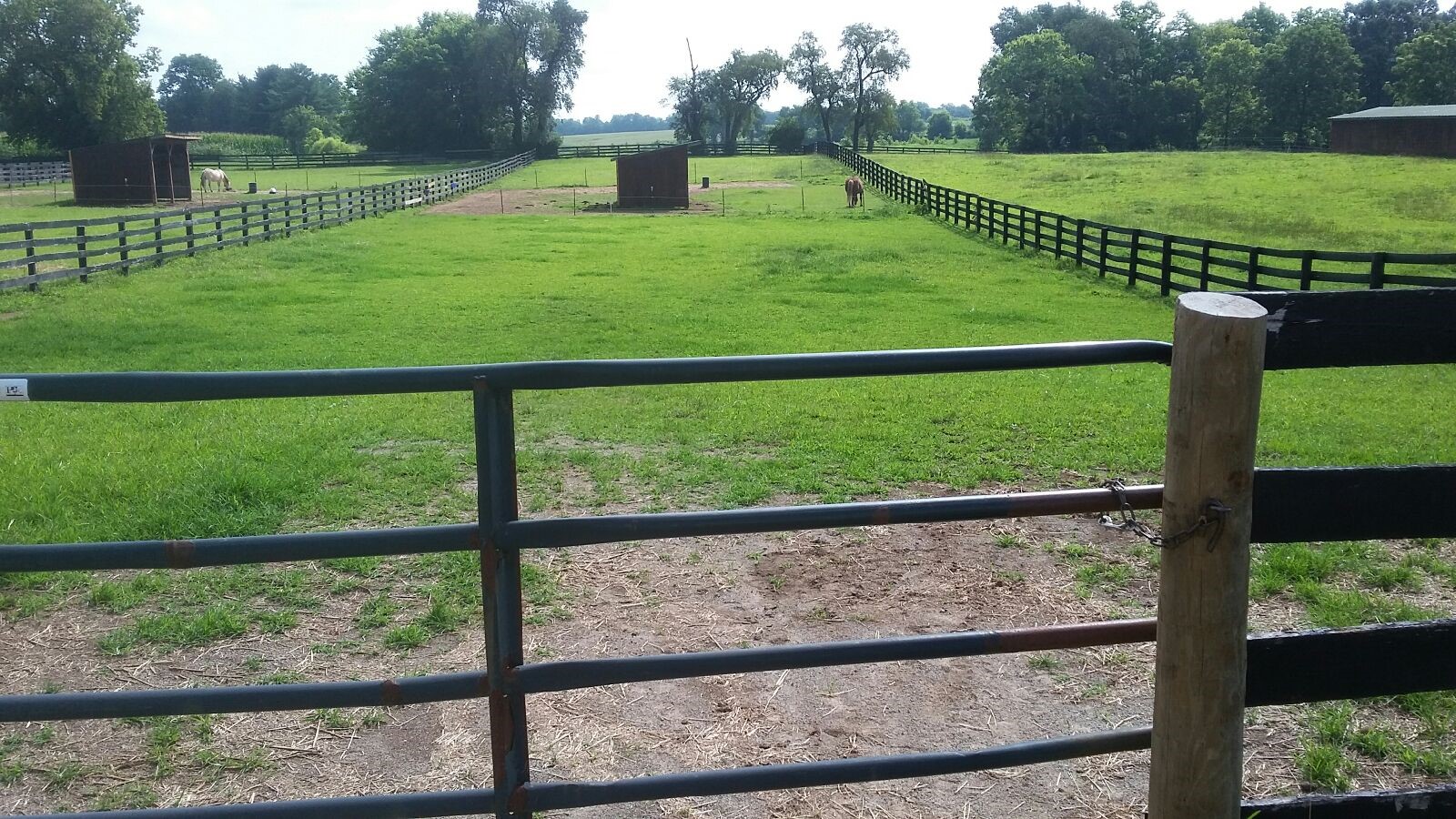
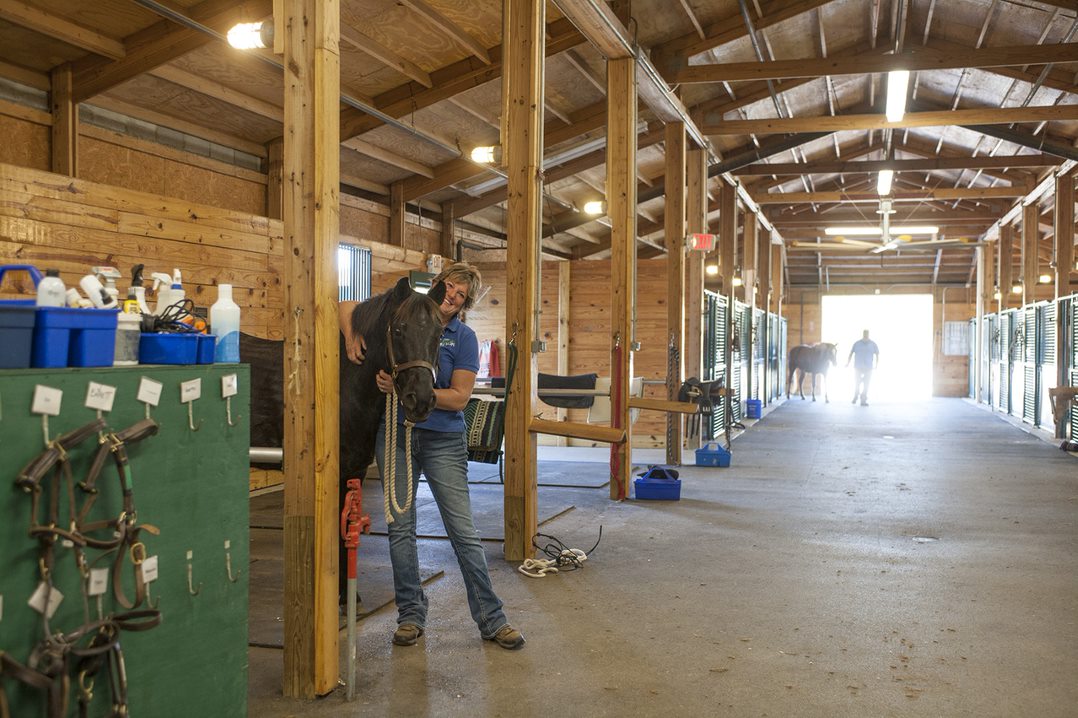

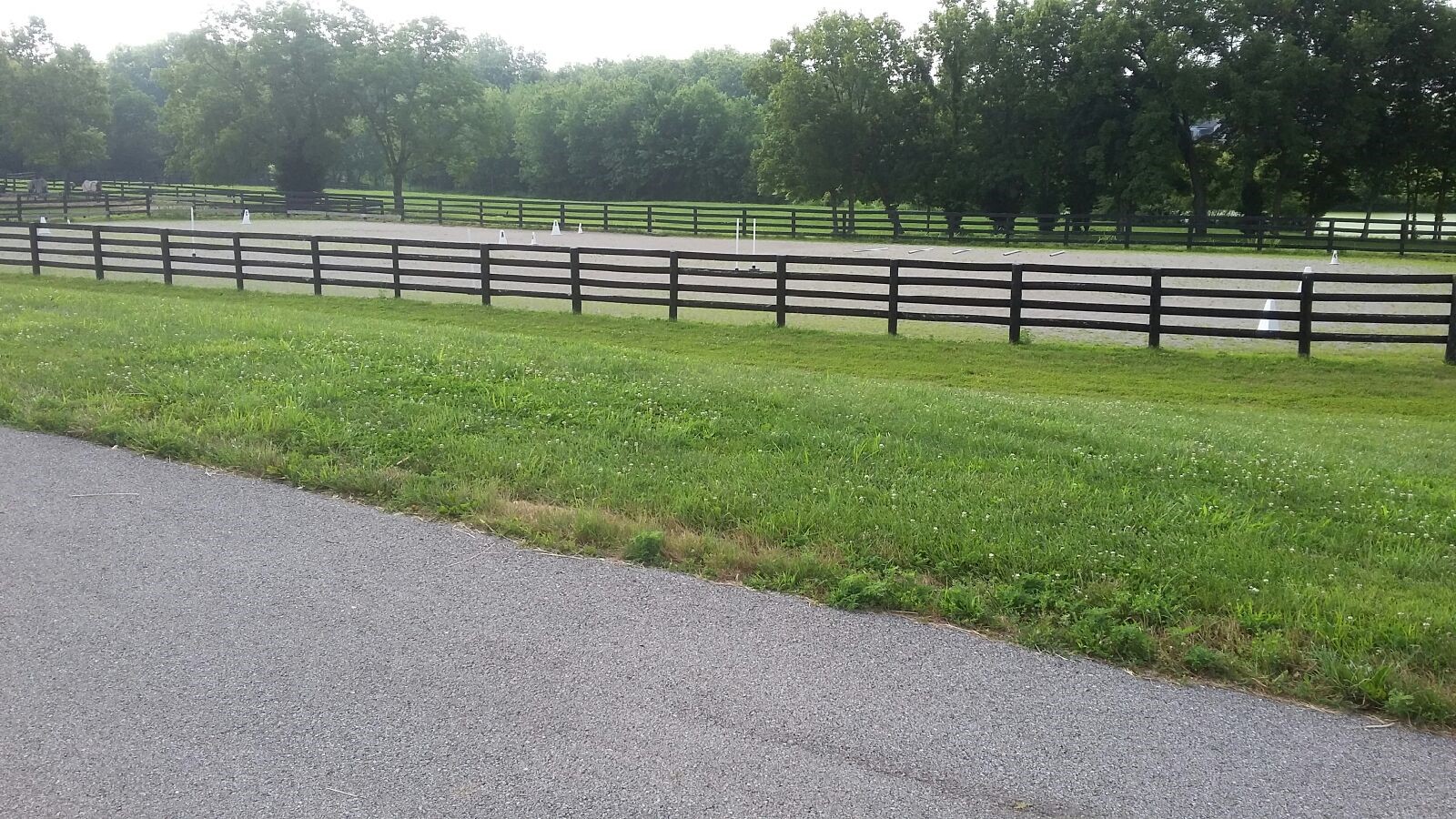

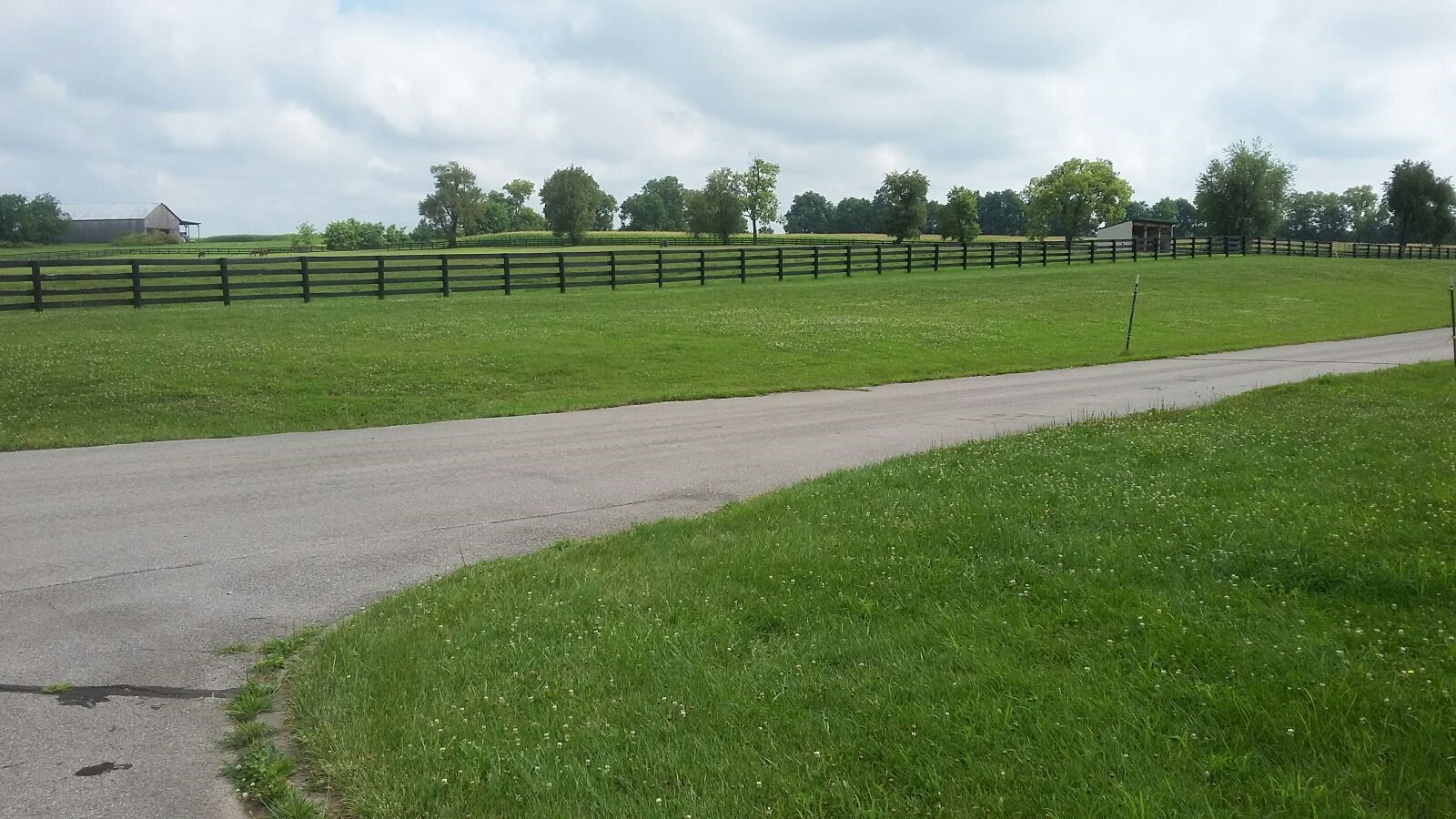
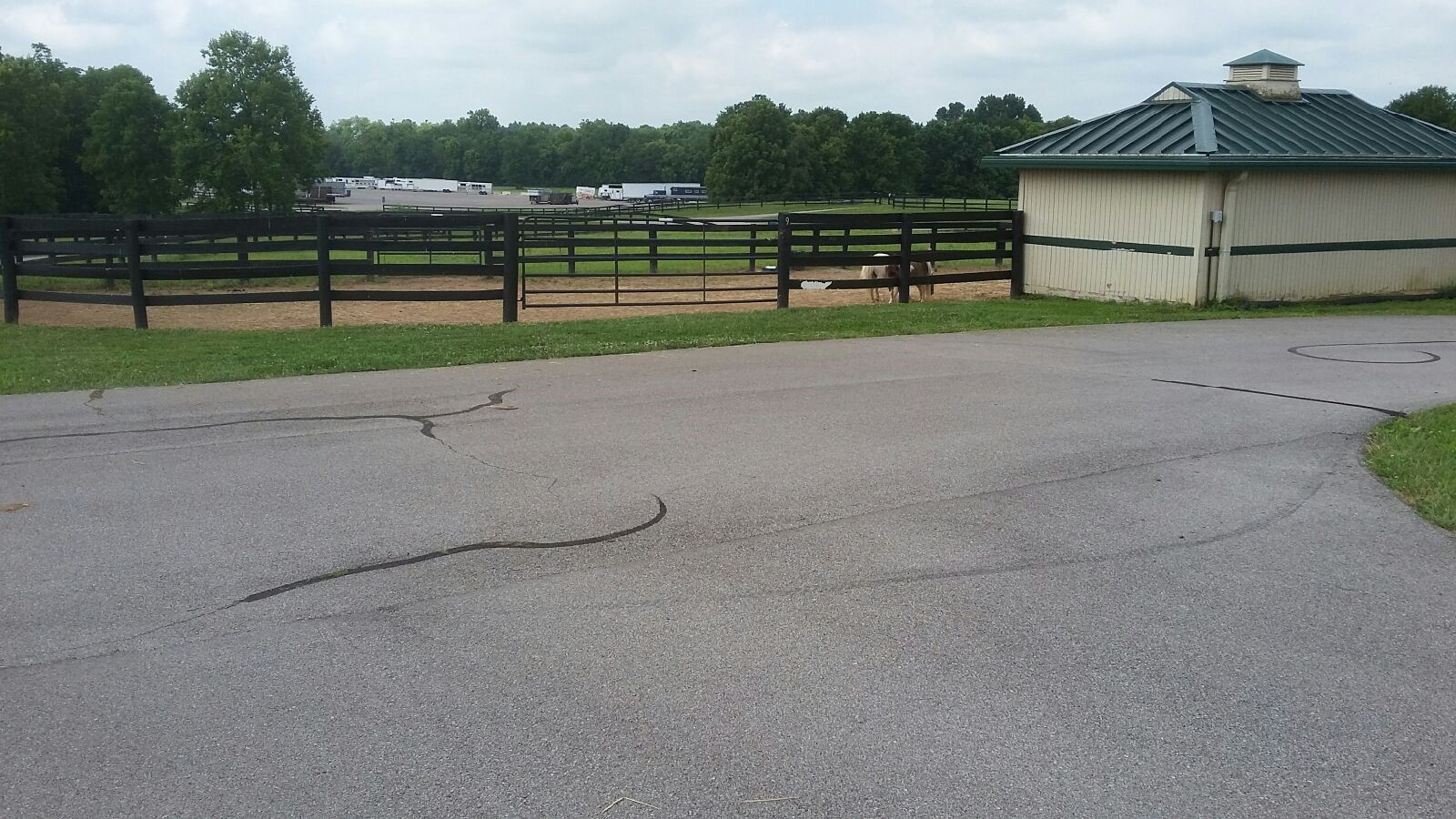
Regarding structures at this facility where horses are stalled:
Do horses have assigned stalls in the structure(s)? No
Do all stalls/enclosures allow horses to lie down, stand up and turn around? Yes
Is there adequate ceiling & beam height (a minimum of 12 feet above the tip of the horse's ear) when standing in all stalls/enclosures? Yes
How often are the stalls/enclosures cleaned? 6-7 Days a Week
Are floors constructed and maintained for both good drainage and traction? Yes
Is there a ventilation and circulation system in place to control temperature and prevent buildup of toxic gases? Yes
Is wiring inaccessible to horses and maintained for safety? Yes
Are fire prevention/protection measures (fire alarms, extinguishers and sprinkler systems) maintained and in good working order? Yes
Is there adequate lighting to ensure safety in all areas of facility? Yes
Are emergency contacts, including veterinarian contact information, conspicuously posted in easily accessible locations? Yes
Are human and equine first aid kits easily accessible? Yes
How many hours per day, on average, are horses stalled? 0-3;
How many hours per day, on average, are horses turned out:
Equines are out 24/7 except they are brought in to feed
Equines are out 24/7 except they are brought in if there is inclement weather
Equines are out 24/7 except when they are being trained
Equines are out 24/7 except when they are used for the conduct of the organization's programs
The following describes the pastures at this facility:
This facility has a written plan in place for pasture management, which includes guidelines for seeding, fertilizing, irrigation, mowing, dragging, harrowing, manure removal, removal of debris, the control of poisonous plants, and a schedule for cleaning
A dedicated staff person(s) is responsible for pasture management
All pastures are fenced to prevent escape or injury
Fencing checks, such as broken or missing planks, loose fence posts, exposed or loose nails, detached wires, etc., are done regularly
Pastures are rotated
Pastures have natural protection for equines (i.e., trees)
Pastures have man-made protection for equines (i.e., shelters)
This facility does not have pastures where equines can graze on pasture grass
Barbed wire is used for fencing
Electric fencing is used; electric wires or tape fence are visibly marked
The following describes the turnout areas other than pastures at this facility:
This facility has a written plan in place for the maintenance of turnout areas, which includes a schedule for cleaning, manure removal, and dragging
A dedicated staff person(s) is responsible for the maintenance of turnout areas
All turnout areas are fenced to prevent escape or injury
Electric fencing is used; electric wires or tape fence are visibly marked
Turnout areas have man-made protection for equines (i.e., shelters)
Fencing checks, such as broken or missing planks, loose fence posts, exposed or loose nails, detached wires, etc., are done regularly
This facility does not have turnout areas
Barbed wire is used for fencing
The following policies and procedures are in place at the facility to restrict public access and to keep horses safe:
A security guard is present at night
Equines are checked overnight
Hold Harmless signs are posted
Authorized Personnel Only signs are posted
Visitors are only permitted at specific times
Visitors are only permitted in specific areas
The property is fitted with motion lights
The property is fitted with a security system monitored by police or a professional service
The property owner, staff member or caretaker lives on the premises and ensures that public access is restricted and is responsible for the security of the facility and equines
By Appointment Only signs are posted.
No Trespassing signs are posted
Entrance gates are locked at night
The property is fitted with a security system that is monitored internally by staff (or the property owner)
The perimeter of the property is fully fenced
Equine Care/Emergency Preparedness: Central Kentucky Riding for Hope, Inc. (*Main) 2024 and 2023 This section is required.
Horse Health Care/Barn Management Records: What system is used to collect and store health/horse care records?
Notebook or equivalent (technology not utilized)
Onsite computer with onsite backup storage system
Onsite computer with cloud-based backup storage system
Our organization utilizes a software application to maintain records
Our organization would use free cloud-based barn management software if available
The following items are consistent with our feed management plan and practices:
Equines are provided with individualized feeding plans, including supplements, according to age and any health issues
Feed plans are determined in consultation with a veterinarian
Supplement plans are determined in consultation with a veterinarian
Equines are fed in groups
Staff and volunteers are trained in proper feed measurements and protocols and observed periodically to ensure they are feeding correctly
The feed chart is centrally located and updated as needed
The area(s) where hay, feed, grain, and supplements are stored are kept clean, free of debris and chemicals, and protected from weather and other animals in rodent-proof and mold-proof containers and grain bins
Feed, supplements and hay types are clearly labeled
Water sources, i.e., buckets, troughs, automatic waterers, etc. are kept clean, free of debris and chemicals, and protected from weather and other animals
Medications are kept in a locked, climate-controlled area
Equines are fed in individual stalls
Do horses have access to clean drinking water at all times? Yes
Hoof Care: How often is hoof care provided for each equine? Every 4-8 weeks and when an issue arises
Dental Care: How often is dental care provided for each equine? Annually and when an issue arises
Horse checks: How often are equines visually and physically checked by personnel at the facility? Every day or 6 days a week
Parasite Control: Our organization has the following worming protocols in place: (Check all that apply
The protocol for each equine is determined in consultation with a veterinarian
Fecal testing is performed prior to the use of a de-wormer.
Fly/Insect Control: What remedies are used to control flies and insects?
Fly parasites
Fly Traps and Tapes
Premise Sprays/Insecticides
Fly Spray Repellent
Fly Masks
Fly Sheets
Fans
The following represent the biosecurity practices in place at facility:
Our organization follows the AAEP's Biosecurity Guidelines and/or the UC Davis Biosecurity Guidelines
Our organization follows the biosecurity guidelines of our veterinarian
Sick, affected and/or quarantined equines do not have contact with other equines or other animals
The organization has a written biosecurity plan
All staff are trained in best practices related to biosecurity
All volunteers are trained in best practices related to biosecurity
A specific individual is assigned to care for sick, affected and/or quarantined equines
Restricted access signs are posted at primary points of access to sick, affected and/or quarantined equines
Hand sanitizers and footbaths are available at all primary points of access to sick, affected and/or quarantined equines
Manure and bedding from sick, affected and/or quarantined equines is disposed of in specific areas designated for infectious materials - not put in open air piles, and not spread on pastures
Stalls, aisle ways, and common areas are disinfected after conclusion of the quarantine
Trailers/vans used by sick, affected and/or quarantined equines are cleaned and disinfected after each use and cleaning takes place away from where equines are sheltered
Equipment used by sick, affected and/or quarantined equines is not shared and is clearly labeled
Shared equipment used by sick, affected and/or quarantined equines is cleaned of organic debris and disinfected after each use
Latex gloves are worn when working with sick, affected and/or quarantined equines
Personnel are required to leave the facility (or shower and change clothing) after working with quarantined equines
Sick, affected and/or quarantined equines are cared for last if the caretaker must also care for healthy equines
Equines are not quarantined on arrival.
The following represent the manure removal practices in place at facility:
Manure is hauled, sold or given away
Our organization adheres to the manure management guidelines set by state and/or local authorities
Manure is stored in dumpster(s)
Manure is piled in an area where equines are not located
Manure piles are covered
Manure piles are composted or spread on pastures
The following steps are taken to help staff and volunteers readily identify each horse on the property:
Equines wear halters with nametags
A notebook or binder with photos and information on each equine is easily accessible
A map/diagram is posted showing the location of each equine with equine names and photos
Equine photos and profiles are available on the website
Staff/volunteers are provided training on conformation, markings, colors, and breeds
Team leaders work with new staff/volunteers until they are able to identify the equines
Equines are assigned the same stall/location each day
Name plates are located on the stall
Photos are located on the stall
Staff and volunteers are provided with an information packet with equine profiles, including photos and detailed descriptions
Our organization has the following policies and procedures in place pertaining to tack, apparel and equipment:
Saddles are shared
Saddle pads are shared
Blankets are shared
Sheets are shared
Blankets, sheets and turn out apparel are fitted and utilized for each equine appropriate to the equine's needs and the weather conditions
Blankets, sheets and turn out apparel are cleaned regularly as needed
Tack is cleaned weekly
Tack is inspected for overall working condition before each use by trained personnel
Tack is assessed for fit before each use by trained personnel
Tack is assessed for fit by trained personnel when an equine's body condition changes
Tack is assessed for fit by trained personnel when an equine's disposition changes
This facility enlists the services of a professional saddle fitter at least once a year
Assigned tack is clearly labeled
Tack is stored in a climate-controlled location
Helmets are shared
Helmets are cleaned/disinfected after each use
Helmets are replaced after a fall
Helmets are replaced at least every five years.
All equines have specifically assigned tack, apparel and equipment that is not shared
Bridles are shared
Bits are shared
Turnout apparel is shared
Halters are shared
Tack is cleaned after each use
Tack is cleaned only when needed
No equines are ridden; not applicable.
Emergency Preparedness: Central Kentucky Riding for Hope, Inc.: *Main This section is required.
The following plans, policies, and procedures are in place at the facility to handle emergencies and address weather related issues, fire safety procedures, and/or any additional hazardous scenarios the facility could potentially experience:
Emergency procedures are posted prominently
Emergency phone numbers are posted prominently
The facility owns or has access to a generator
The facility maintains at least two weeks of hay, feed, shavings and medications
The facility collects and maintains medical information from staff, volunteers, and clients
The facility maintains appropriate liability and/or workers' compensation insurance
All staff/volunteers are briefed regularly on emergency preparedness/safety procedures
The organization has a written emergency preparedness/safety plan (EPP)
Local fire department and/or the state's emergency planning department procedures
Medical emergencies for clients, staff, and volunteers
Medical emergencies for equines
Evacuation plans
Power outages
Fire
Natural Disasters - thunderstorm, hurricanes, earthquakes, tornados, etc
Terrorist attacks
Protocols to notify emergency personnel
Building/facility exit plans
The facility follows the specific procedures to help PREVENT emergency situations:
Smoking is strictly prohibited
NO SMOKING signs are posted prominently
Hay is stored away from permanent or temporary structures where equines are stalled
Permanent or temporary structures where equines are stalled are kept free of dust, cobwebs, trash, cleaning rags, and other flammable items
Aisles and doorways are kept clear
Heaters with automatic shutoff settings are used
How often are the following checked or performed?
Fire Extinguishers are checked: Quarterly
Smoke detectors are checked: Quarterly
Electrical Systems are checked: Quarterly
Fence lines are checked: Daily
Turnout Areas are checked: Daily
Sprinkler systems are checked: Quarterly
Fire drills are conducted: Quarterly
Review of safety protocols with staff are conducted: Semi-annually
Review of safety protocols with volunteers are conducted: Annually
The Emergency Preparedness Plan is reviewed and updated: Annually
Equine Transportation
2-horse van/trailer with truck:
1 Owned onsite 0 Access onsite but not owned 1 Access offsite;
3-horse van/trailer with truck:
0 Owned onsite 0 Access onsite but not owned 1 Access offsite;
4-horse van/trailer with truck:
0 Owned onsite 0 Access onsite but not owned 1 Access offsite;
6-horse van/trailer with truck:
0 Owned onsite 0 Access onsite but not owned 1 Access offsite;
8-horse van/trailer with truck:
0 Owned onsite 0 Access onsite but not owned 1 Access offsite;
10-horse van/trailer with truck:
0 Owned onsite 0 Access onsite but not owned 1 Access offsite;
